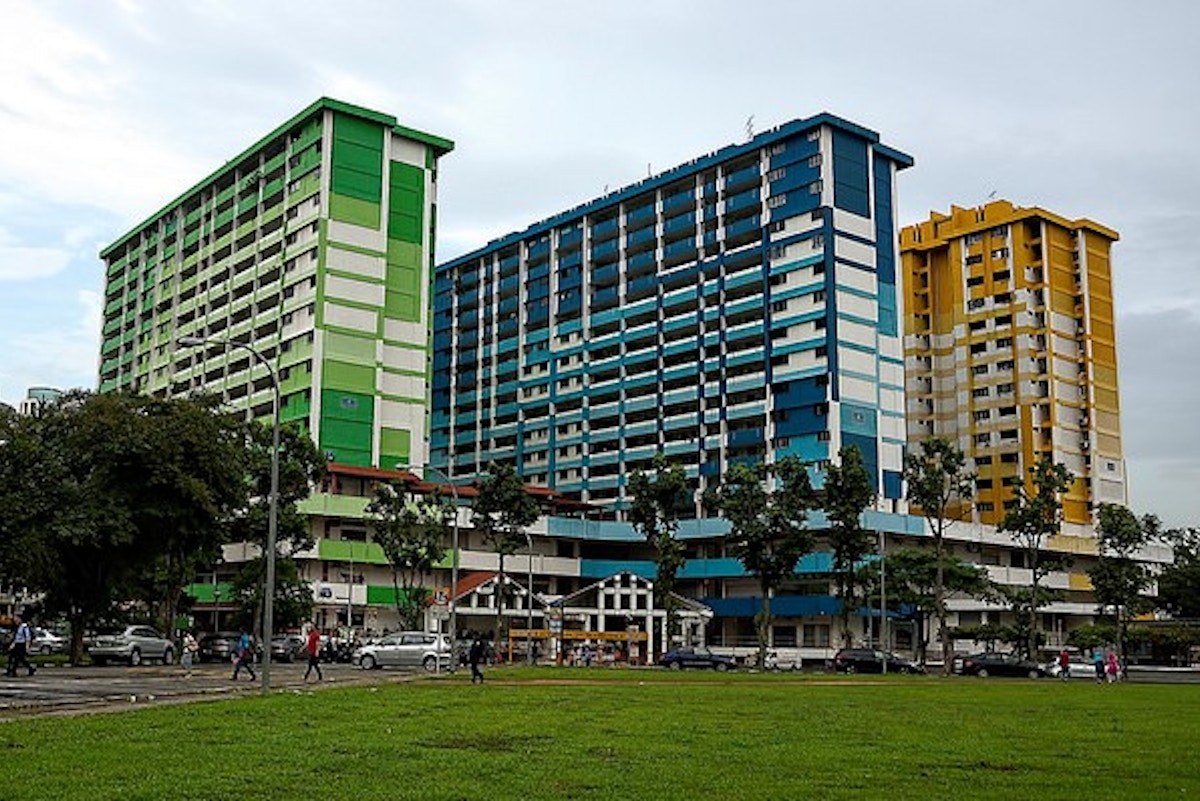Courtesy : en.wikipedia.org
Green affordable housing
Green affordable housing is reasonably priced housing that incorporates sustainable features. The phenomenon has become increasingly common in the United States with the adoption of state and local policies that favor or require green building practices for publicly owned or funded buildings. Potential benefits of green affordable housing include lower energy cost burden and improved health. One challenge to green affordable housing is the tendency to overlook long-term benefits in the face of higher upfront cost. The challenge for green housing advocates is to see to the life cycle cost of the building.Many affordable housing projects already find it a challenge to raise capital to finance basic affordable housing. Green affordable housing has taken form in traditionally wooden homes and most recently with ‘upcycling’ shipping containers
Definition
Although there is no single definition for what constitutes a Green Building, some elements recur in describing the concept. A Green Building can thus be defined as a high-performance building designed, built, operated and disposed of in a resource-efficient manner with the aim to minimize the overall (negative) impact on the built environment, human health and the natural environment. Some examples of green building features are choice of site and orientation, efficient use of materials and resources, indoor environmental quality and inno
Affordable Housing in the US is defined as dwelling units whose total housing costs fit within the budget of households at the local median income level. Affordability is commonly defined as not spending more than 30 percent of household income on housing.Given the higher exposure of low-income households and the need for public assistance, the most salient features of green affordable housing are energy use, material use/durability and a healthy indoor environment.
Background
Publicly sponsored affordable housing projects use public funds or tax breaks in order to increase the stock of housing available to low income people. In addition, these projects often seek to improve the quality of the stock, in order to offer “decent, safe, sanitary, and affordable living environments”.Green Affordable Housing projects add to those goals by lowering the lifetime cost of units and improving the quality. The concept of the triple bottom line defines sustainability to include economics, social equity and the environment. Affordable housing already addresses economics and social equity. Sustainability measures obviously help the environment, but they can help the economics and social equity of housing projects as well. Housing units with a better design can improve health outcomes. With lower utility costs and improved health outcomes, the projects are more beneficial to low-income households, who are particularly exposed to poor housing quality and increases in general life costs, e.g. for utilities or medical expenses. Economically, sustainable design lowers the lifetime cost of a building. Since the preservation of affordable housing is sensitive to public funding, making affordable housing greener is a logic step to reducing long-term costs and increasing stability. Green design increases the economics, social equity, and environmental impact of affordable housing projects.
Characteristics of the existing affordable housing stock
The affordable housing stock varies in terms of ownership, type and quality. However, financing of affordable housing has in most cases been constrained which means quality of affordable housing construction projects often has been compromised.
Policy programs that require green building standards in new construction will contribute to greening the affordable housing stock. However, new construction, whether green or conventional building, will in general be of higher quality, more efficient and healthier than older buildings. In contrast, the existing affordable stock constitutes a challenge from many perspectives. According to the National Center for Healthy Housing (NCHH) 5.7 million of American families live in substandard housing.
Existing low-cost units tend to be older than the housing stock in general. For example, in 1995, 68% of the affordable rental housing stock was constructed before 1970 and another 21% were built before 1980. A considerable share of the older affordable rental stock has been removed from the market since 1995, but many of the remaining units are in older buildings. Due for example to differences in building standards, technical development and historical maintenance, the older building stock is generally of worse quality than newer buildings. Deficits include cold down draft, poor insulation and inefficient windows and appliances.




